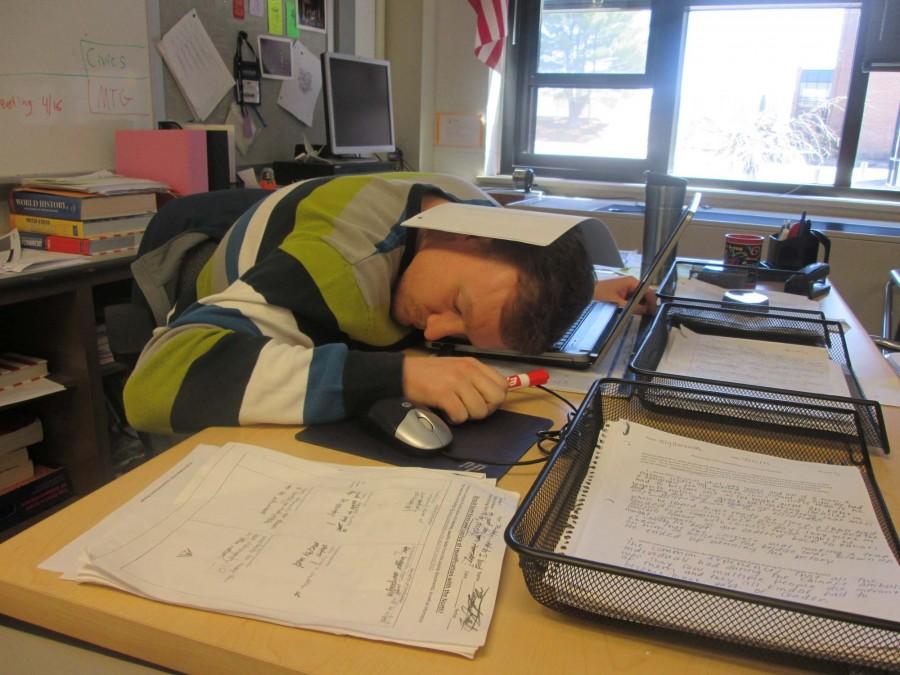Senioritis: It’s Not Just for the Kids Anymore
April 15, 2015
According to LSM students, senioritis is a condition that afflicts many senior students, who, nearing the end of their high school career, suffer from decreased motivation and dedication to their schoolwork. Students with senioritis experience lethargy, inability to focus, and a dropping GPA. The existence of condition has been often discussed among students and teachers.
What students do not discuss is the disease called ‘teacheritis’, the teacher equivalent of senioritis. The study of teacheritis is an emerging field, with many opportunities for discovery. Knowing this, The Scroll decided to delve deep into the psyches of the teachers here at LSM, to uncover more information on this dreaded disorder.
The causes of teacheritis seem to be mostly calendar-based. Most teachers say that March is the worst month of the school year. March, with no vacation days and dwindling hope of school cancellations due to weather, is said to feel like the longest month in the school year. Teachers described March as “heinous” and “disgusting”, and compared the month to “torture”, calling it the “Wednesday of the year”. As one teacher said, March is “like running. You love it, and you know that it’s good for you, but you just want to stop because you’re tired.”
For other teachers, teacheritis is caused not by the arrival of March, but with the arrival of a large workload. All of the teachers interviewed agreed that it is not class time with students that they dread, but the work they must take home with them. It is common for a teacher to be required to complete hours of grading each night, both during the week and on weekends. When they have a particularly large amount of grading to finish, teachers admit that they experience dread and loss of motivation, analogous to seniors and homework.
The symptoms of teacheritis are almost identical to those of senioritis. They include “general crankiness”, exhaustion, and as one teacher put it, “Ugh.” For students curious about how to spot a teacher suffering with this disease, there are several noticeable side effects. Teachers with teacheritis often admit to re-wearing clothing as they lose interest in doing laundry. Thus, you can notice a decreased variety in wardrobe choices. In addition, if you are perceptive, you will notice a blister in the palm of a teacheritis sufferer’s hand, caused by hitting the snooze button on their alarm clock so frequently.
Luckily, there are many proven cures for teacheritis. Sometimes, all that is needed is a break from school and work. As one teacher said, “The best feeling, and I’ve only felt it twice, is when you go home on a Friday with no papers to grade.”
Other cures include summer vacation, laughter, weekends, and the knowledge that teaching is an important job that helps many people. Another teacher said that the cure that motivates her to get up in the morning and come to school is thinking, “I’m not alone. I’m not the only teacher that has to get up every morning.”
However, perhaps the most effective and permanent cure lies within the students. When students prove that they are working hard, and completing assignments to the best of their ability, teachers experience gratification and pride. Ms. Bennet, a social studies teacher, stated that one of the most refreshing and rewarding feelings is seeing her students succeed. With their success, students can help our teachers renew their motivation to come to school each day and reignite their passion for teaching.









